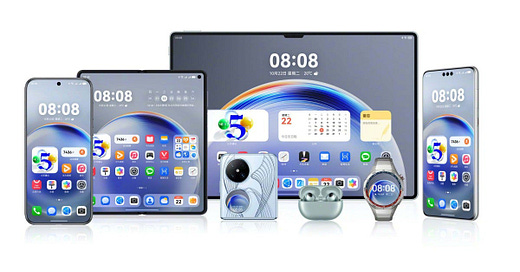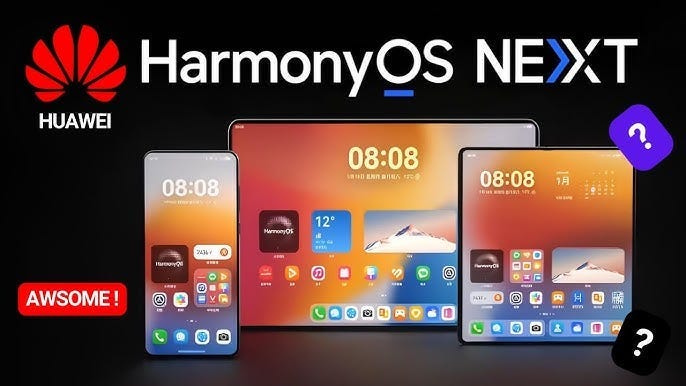Huawei HarmonyOS Next Ecosystem in 2025: Seamless Experience Across Phones, Watches, TVs, and More
HarmonyOS Next powers Huawei’s 2025 cross-device ecosystem — including phones, watches, TVs, and more. Learn about its architecture, dev tools, and real-world use cases
Hi, in this article, we’ll explore how HarmonyOS Next powers Huawei’s 2025 cross-device ecosystem — including phones, watches, TVs, and more. Learn about its architecture, dev tools, and real-world use cases.
Introduction
Imagine starting a workout on your smartwatch, seeing live stats on your phone, and broadcasting your progress on your TV — all without a single app switch. This isn’t a futuristic concept anymore — it’s HarmonyOS Next in 2025.
With HarmonyOS Next, Huawei is not just releasing an operating system; it’s creating a cohesive ecosystem where multiple devices function as one. Phones, watches, tablets, TVs, and smart displays are no longer isolated — they are nodes in a distributed system built for seamless interaction.
This article walks you through:
What makes HarmonyOS Next different
How its cross-device capabilities work
Real-life scenarios and developer insights
Tips and tools to get started
What Is HarmonyOS Next?
HarmonyOS Next is Huawei’s latest-generation operating system built from the ground up to enable distributed computing across devices. Unlike traditional OS models, it’s not designed just for phones — it runs natively on smartwatches, tablets, TVs, and even car dashboards.
Key Features:
ArkTS + ArkUI: A performant and reactive framework for building apps once and deploying across multiple screen types
Distributed Task Scheduling: Share resources and workloads between devices in real time
Super Device UI: Graphically connect and manage multi-device collaboration
Seamless Kit Integration: Access camera, health data, sensors, and media from other devices in the network
Why This Ecosystem Matters in 2025
In 2025, users expect fluid, connected experiences. HarmonyOS Next is designed for exactly that:
The operating system abstracts away physical device boundaries, letting users start tasks on one device and continue on another, intuitively.
Developer Experience Across Devices
Developers benefit from a unified codebase with ArkTS and ArkUI:
1. ArkTS Language
Type-safe, modern, and async-friendly
Easy learning curve for TypeScript or Flutter developers
2. ArkUI Framework
Declarative, reactive UI
Responsive by default
Supports animations, gestures, and transitions out of the box
Real-World Scenarios in HarmonyOS Next
🎥 Scenario 1: Multi-Screen Entertainment
Start watching a movie on your tablet
Tap “Continue on TV” — video resumes instantly on your living room screen
Use your phone as a remote or chat companion
🏋️ Scenario 2: Cross-Device Fitness
Start a running session on your Huawei Watch 5
Live heart rate appears on your phone
Calories burned and leaderboard displayed on your Huawei Vision TV
👩💻 Scenario 3: Work Anywhere
Read a document on your phone
Swipe to transfer it to your tablet for annotation
Join a meeting via the Super Device speaker system
Challenges & Solutions
⚠️ Challenge: UI adaptation across screen sizes
✔️ Solution: Use ArkUI layout containers with constraints like .gridWeight() or .flexGrow()
⚠️ Challenge: Permission syncing across devices
✔️ Solution: Leverage SecurityKit’s distributed permission flow and identity tokens
⚠️ Challenge: Debugging multi-device flow
✔️ Solution: Use distributed logs and DevEco Studio’s multi-device deployment and log merging feature
Conclusion
HarmonyOS Next is not just an upgrade — it’s a paradigm shift.
In 2025, users don’t want to “install the same app everywhere.” They want one continuous experience across every device they use. Huawei’s distributed OS and developer tools make that possible today.
Whether you’re building health apps, streaming services, or productivity tools, HarmonyOS Next gives you:
A unified language and UI framework
Distributed capabilities out of the box
A truly seamless, cross-device experience
💡 Start building for the ecosystem — not just the screen.
References
For more information, please visit the Huawei Developer Forum






